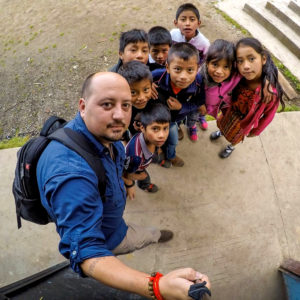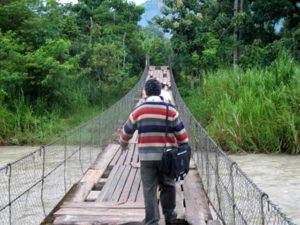
In his travels around Guatemala, Andres Galvez Sobral loves to stop to take photos of the country’s beautiful landscapes and people. He says that telling stories through photography is a way to “produce some change and show the diversity, beauty, and kindness of my people. We are a humble, hard-working, family-oriented and community-based society.”
Andres, the Director of the Educational Research Center at the Universidad del Valle de Guatemala, has a passion for bringing positive change to his country, and that is one of the many reasons we are excited to welcome him as the first Guatemalan member of our board of directors. We see our work as a partnership with the Guatemalan people to improve the quality of education for all children. Andres brings a commitment to our mission, and a deep understanding of the challenges Guatemalans face in ensuring every child learns to read.
Please tell us a little about yourself and your connection to Child Aid’s work.
I was born in Guatemala City in 1979, the oldest of three children. I’m married to a beautiful wife who also works in educational research. We are now expecting twin girls.
I have worked as an educational researcher in Guatemala since 2006, with a focus on ethnicity and education and issues around bullying. I’m currently the Director of the Educational Research Center at the Universidad del Valle de Guatemala.
I grew up as an upper middle-class kid in Guatemala City, in a comfortable community where it is common to go to private school, then university and get a job. You could say I grew up in a bubble where the [Guatemalan Civil] war was just something that happened in the mountains (foreign places for me) and where sometimes you heard that bad things happened to some foreign people (the Mayas). It wasn’t until my late 20´s, when I got a job at the Ministry of Education, that I learned about the “other” Guatemala.
One of my first trips outside of Guatemala City was to a small school high in the mountains of Alta Verapaz, where I was coordinating an international assessment project. The road up to the school was rough — mostly dirt and mud — requiring us to drive across two bridgeless rivers. At the second river we met a young man who was crossing on foot. In one hand he carried his bike and some books. It turned out this young man was the principal of the school we were visiting!

Our group crossed a third river using a pedestrian bridge, and we walked the rest of the way to the school. Once we arrived, children appeared from the surrounding mountains. The children came alone, all very small, dirty and nervous. We were 30 minutes into administering the testing when we had to stop the evaluation because the children in the third grade classroom did not understand the instructions in Spanish.
This experience marked my life because it was the first time I understood the problems in the rural areas of my country: the poverty, the hunger, the malnutrition, the lack of opportunity, etc.
You recently visited the Child Aid offices for the first time and met with our staff of literacy trainers. What were your impressions from your visit?
I was immediately impressed by the enthusiasm and professionalism of the staff. It’s easy to see how Child Aid helps children in schools, teachers and communities. Each team member talks with passion about their work — providing books, giving teachers access to new information, helping children discover the fun of reading. Their enthusiasm for literacy reminds me of my own childhood when I enjoyed visits to my grandmother who had boxes full of books.
I also saw that the “culture” of Child Aid is very strong and has an impact on everyone associated with it. The people working with us grow personally and professionally, and I am convinced that they are agents of change in their families and communities. I think the investments Child Aid makes in staff — hiring the most qualified and dedicated people from the communities where we work; giving them excellent training and pay, and developing a team culture based on work and a desire to have impact on the future of children — makes this organization unique and makes us all proud to be part of it.
What most excites you about joining Child Aid? Why is this work important to you personally?
My wife and I have a simple phrase that is our personal philosophy: Spread the love. We have been blessed with a good life, and we try to give back as much as we can. We live in a country with high inequity, so it is easy to see and know people in need.
The sense of community is very strong for Guatemalans, and we can be very generous in helping others in need when we know them personally. As a middle or upper-middle class person, I might help my employee and his family, the gardener, the son of the person selling me tortillas, the grandfather of my neighbor, or the children of a friend who has lost his job. Guatemala is also a very religious country, and many people donate money through their churches.
But the truth is, for someone living in the city, the people who need the most help are far away. If I can help an organization like Child Aid, with a staff, a board and donors who have a genuine interest in helping the children of my country, I am happy to do it. That is why I accepted a position on the Child Aid Board, and, as of today, it is the only board I belong to.